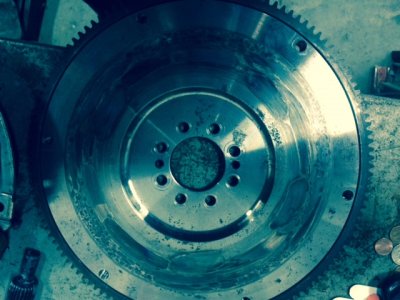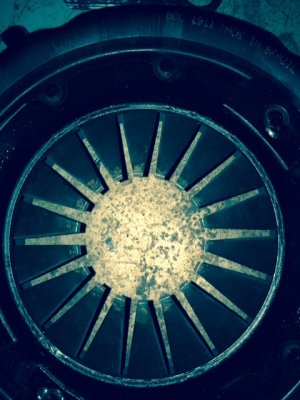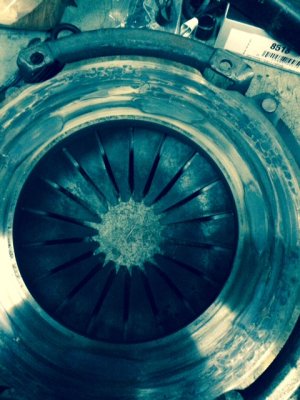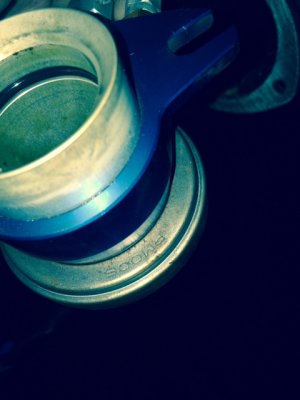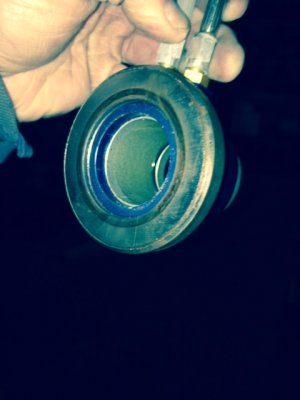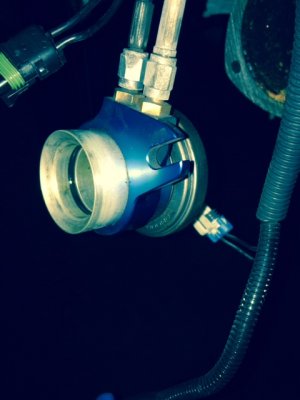69ProTouring
Active Member
Was hoping I could get some advice for someone who might have experience with different clutches on the market.
I have a 69 Road Runner.
I'm running a Gary Stanton Gen III Hemi 7.0L, 605 HP, 550 ft/lb of torque. Here it is -> http://www.bpeusa.com/BPEGS75600SRT8.asp
I also bought my complete drivetrain from American Powertrain, which included a Hydramax Hydraulic Clutch Kit with a Science Friction Street Slayer ClutchKit. The clutch kit was rated for 545 - 755 ft/lb of torque.
Anyhow, I had a shop install it, and drove it around for a couple hundred miles, but I had 2 problems. 1 - The clutch pedal was stiff! Was like driving around doing leg presses. 2 - I barely lifted the clutch pedal off the floor and it would engage. It just didn't seem right so I took it to another shop to drop the transmission and take a look. Here is what they found (pictures below). Clutch is fried! I don't really know what to make of this. I really didn't drive it hard, and only put about 200 miles on it. I'm not sure if it could be that it was installed improperly and it was constantly rubbing or what. I really didn't drive it hard. Not sure if I should get a different type of clutch either. I've seen dual clutches on the market, not sure if I should go that direction. Anyone ever seen anything like this? Any ideas?
Appreciate the advice. Thanks!
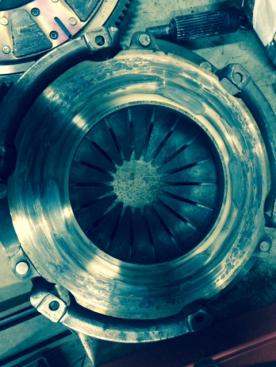
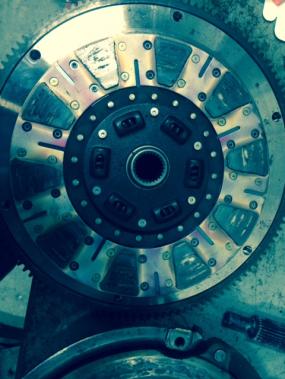
I have a 69 Road Runner.
I'm running a Gary Stanton Gen III Hemi 7.0L, 605 HP, 550 ft/lb of torque. Here it is -> http://www.bpeusa.com/BPEGS75600SRT8.asp
I also bought my complete drivetrain from American Powertrain, which included a Hydramax Hydraulic Clutch Kit with a Science Friction Street Slayer ClutchKit. The clutch kit was rated for 545 - 755 ft/lb of torque.
Anyhow, I had a shop install it, and drove it around for a couple hundred miles, but I had 2 problems. 1 - The clutch pedal was stiff! Was like driving around doing leg presses. 2 - I barely lifted the clutch pedal off the floor and it would engage. It just didn't seem right so I took it to another shop to drop the transmission and take a look. Here is what they found (pictures below). Clutch is fried! I don't really know what to make of this. I really didn't drive it hard, and only put about 200 miles on it. I'm not sure if it could be that it was installed improperly and it was constantly rubbing or what. I really didn't drive it hard. Not sure if I should get a different type of clutch either. I've seen dual clutches on the market, not sure if I should go that direction. Anyone ever seen anything like this? Any ideas?
Appreciate the advice. Thanks!



